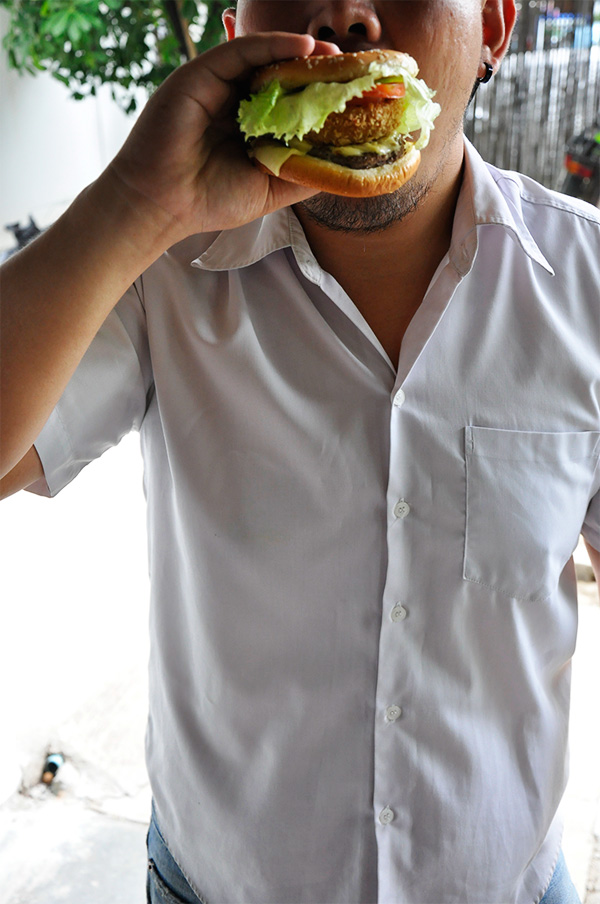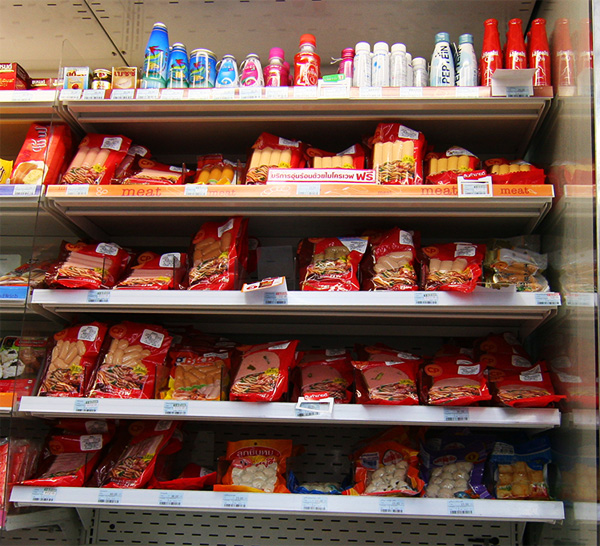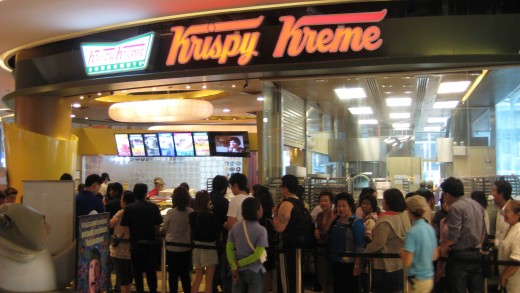For several years Thai politicians have followed that common formula of trying to escape poverty by emulating western business practices. For centuries a population of farmers – the Thais – are now seeing their towns enlarge with Chiang Mai undergoing phenomenal growth in the last 10 years. Young people in the country now see office work as the job they should aspire to along with the lifestyle depicted on TV in commercials with luxury cars, alcoholic drinks, fast food and modern apartments. It is a huge revolution in Thai habits and unfortunately the Thais are having problems with the consequences.

When I arrived in Thailand 27 years ago a fat Thai was an unusual sight, cars were mainly confined to the capital city of Bangkok and western lifestyle was a mystery to all but the elite few. The large percentage of Thais lived in the country, worked on their farms and didn’t earn enough to pay the high prices for luxury goods that carried exorbitant tax charges. A TV cost $500, more than in the USA where they earned at least 10 times as much per day and a small passenger car was twice the American price and more.
Then western industrialization came to Thailand, the government changed its policies to engage in free trade, factories hired thousands of semi-skilled workers and large western department stores opened to compete with local shops. Within 10 years, cars, motorbikes and electrical goods were affordable to the middle classes, TV was a 24 hour experience with commercials every 10 minutes, fast food outlets were in every street and 7-11 became a byword for any 24 hour convenience store. The shape of things to come suddenly turned fatter.
Almost all the older generation in my country village are lean, muscled and fit for their age, signs still apparent of a life of hard work, adequate good food and little overindulgence. In contrast, the younger generation are overweight, under exercised and suffer alarming tooth decay. Many in their middle years have diabetes, high blood pressure and poor hearts. Previously, simple infections, diarrhea, malaria and cholera were the killers and thankfully western medicine has cut the dangers of death from these common diseases. Instead of being healthier, however, a whole new raft of illnesses have arrived to take their place and the hospitals are now busier than ever with modern diseases caused by lack of exercise and bad diet.
 It’s no surprise Thailand’s richest families monopolise Thai-made junk food and alcohol.
It’s no surprise Thailand’s richest families monopolise Thai-made junk food and alcohol.
Western food is a major contributor with pizza, burgers, ice cream, chocolate, chips, biscuits and fizzy carbonated drinks a large part of the new diet. Compounding the problem is the aggressive advertising for this unhealthy food and an indulgence for Thai foods that were at one time extravagances but are now eaten regularly, such as Thai deserts, kah moo (a fatty pork dish), fried chicken and beer. A quick look around my local market will reveal mainly fried meat (mostly skin and fat) with rice and chilli sauces but almost no vegetable dishes on offer.
Finding a 5 year old with a full set of front teeth has recently become difficult due to sweet flavoured milk being promoted as good for their health. Sold with a high sugar content, when it’s sucked out the straw and into the mouth it creates havoc with the front teeth. Coke, sprite and Fanta are more commonly consumed than water, another huge problem for children who see the adverts but can’t conceive the dangers.
These food problems are exacerbated by a desperate attempt by modern Thais to avoid all or any exercise due to its past connection with field labour. People of all ages in my village will ride a motorbike to the shop even if it’s just 200 metres away, park as close as possible to the shop door even if it’s illegal and stop at home within inches of the front steps. Sweat inducing activity is avoided if possible with escalators and lifts even taking the effort out of shopping. Watching T.V. and internet games have also added to the inactivity of the young.
The result is now huge queues in the hospitals, schools with 20% obese kids (especially the richer schools) with a high incidence of diabetes and blood pressure problems. A once healthy nation is now on the sick list and families are spending money they can’t afford on food that will only harm the children in the long run. International fast food companies run wonderful adverts for lousy products but who is going to pay for advertising carrots, apples or fresh water? Parents are now seeing just how hard it is to fight the big companies and making changes will be tough.

Modernity: Krispy Kreme in Bangkok with its massive queues showed us just how ‘out’ fresh food has become. (Photo by James T. Scoggins)